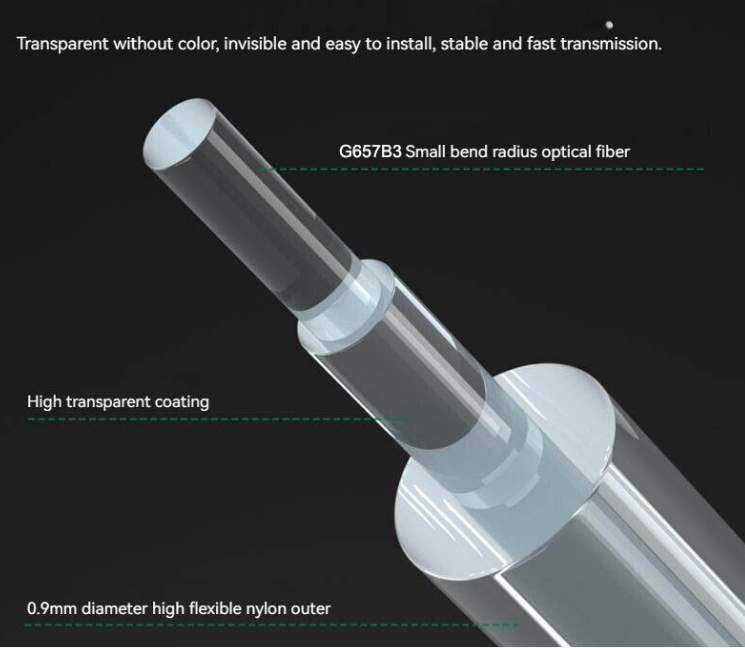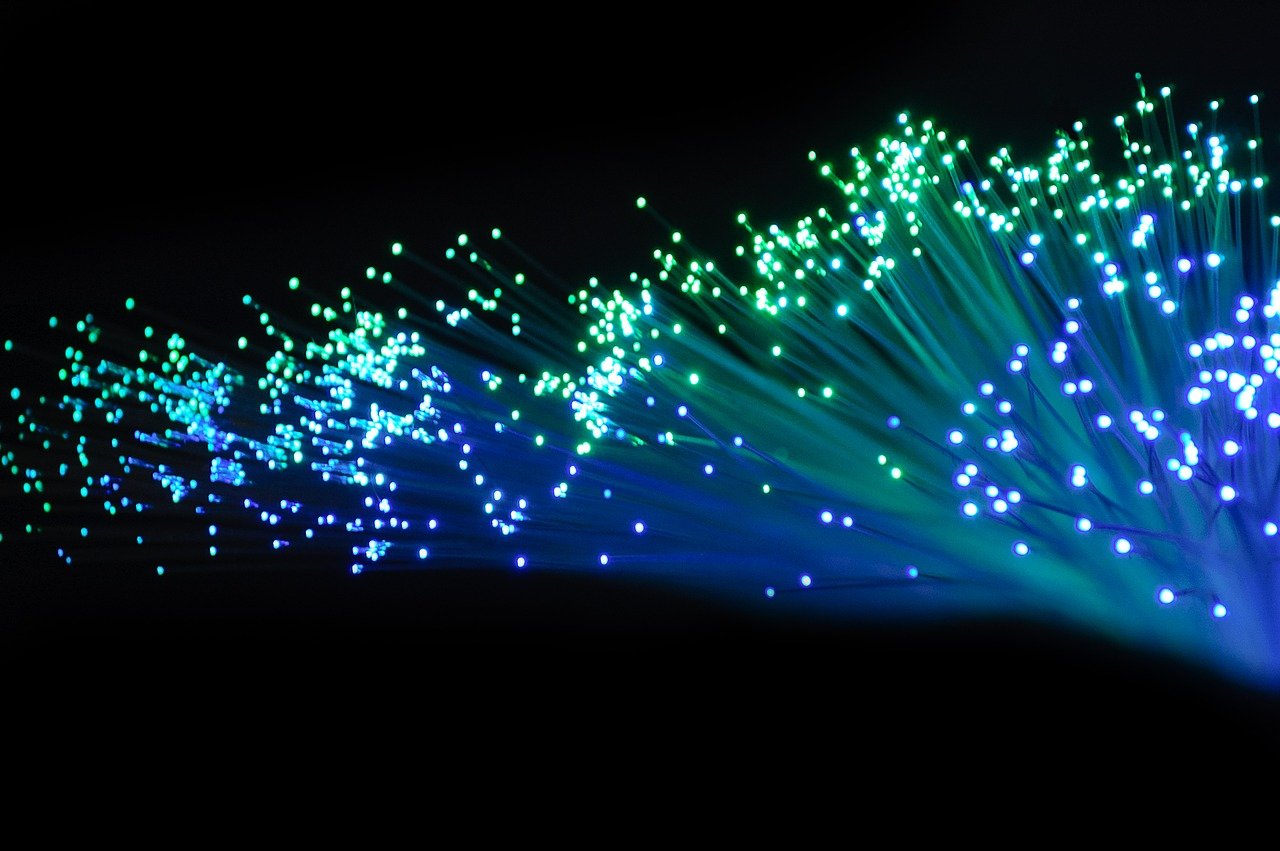Exploring the Applications of Invisible Fiber Cable in Telecommunications

Unveiling Telecommunications Evolution
In the world of telecommunications, the evolution of fiber optics has been a game-changer. The development of invisible fiber cable has significantly impacted how data is transmitted and communicated. This revolutionary technology has paved the way for faster and more secure telecommunications networks, meeting the ever-growing demands of modern connectivity.
Invisible Fiber Advantages
Enhanced Data Transmission
Invisible fiber cable, also known as transparent fiber cable or unseen fiber optic cable, revolutionizes data transmission in modern telecommunications. By utilizing advanced technology, this innovative cable enables faster and more reliable data transmission, meeting the increasing demands of today's interconnected world. With its capability to transmit data at incredibly high speeds over long distances, invisible fiber cable ensures seamless communication and efficient transfer of large volumes of information. This enhanced data transmission capability is crucial for supporting various applications such as video streaming, cloud computing, and real-time communication services.
Improved Security
One of the key advantages of using invisible fiber cable in telecommunications is the heightened security it provides for communication networks. The inherent design of this advanced cable makes it extremely difficult to intercept or tamper with the transmitted data. As a result, sensitive information and communications are safeguarded from potential breaches and unauthorized access. The utilization of invisible fiber cable significantly reduces the risk of data theft and cyber-attacks, making it an ideal choice for ensuring the privacy and security of critical communications within telecommunications networks.
Telecom Fiber Optics
Understanding Fiber Optics
Fiber optics, a critical component of modern telecommunications, involves the transmission of data through optical fibers. These fibers are made of highly transparent glass or plastic and function by transmitting light signals carrying data over long distances. The principle behind fiber optics lies in the total internal reflection of light within the core of the fiber, allowing for minimal signal loss and high-speed transmission.
The use of telecom optical fibers has revolutionized communication networks by providing a reliable and efficient means of transmitting data. Unlike traditional metal wires, fiber optics offer higher bandwidth and are immune to electromagnetic interference, making them ideal for supporting the increasing demands of modern telecommunications.
Applications in Telecommunications
Telecom optical fibers find extensive applications in various aspects of modern telecommunications. From facilitating high-speed internet connections to enabling seamless international communication, these advanced fibers form the backbone of global connectivity. They are instrumental in supporting a wide range of services such as voice calls, video conferencing, internet browsing, and multimedia streaming.
Moreover, the deployment of communication fiber optics has significantly enhanced the reliability and security of telecommunications networks. By leveraging the capabilities of fiber optics, telecommunication providers can ensure consistent and secure data transmission across vast distances while meeting the ever-growing demands for faster and more efficient connectivity.
Fiber Optic Technology Evolution
History of Fiber Optic Technology
The history of fiber optic technology dates back to the 19th century when early concepts of using light for communication began to emerge. However, it wasn't until the 1970s that significant advancements in fiber optics paved the way for its widespread application in telecommunications. The development of ultra-pure glass fibers and the ability to transmit light signals over long distances revolutionized data transmission, leading to the eventual innovation of invisible fiber cable.
As fiber optic technology continued to evolve, it became increasingly clear that traditional copper wire systems were no match for the speed and efficiency offered by optical fibers. The introduction of optical amplifiers and dense wavelength-division multiplexing (DWDM) further enhanced the capabilities of fiber optics, allowing for increased data capacity and longer transmission distances.
The utilization of fiber optics in telecommunications networks marked a turning point in the industry, enabling unprecedented levels of connectivity and paving the way for future innovations such as invisible fiber cable.
Future Prospects
The continuous evolution of fiber optic technology holds immense promise for further advancements in telecommunications. As demand for high-speed data transmission continues to soar, ongoing research and development efforts are focused on enhancing the efficiency and reliability of optical networks. This includes exploring new materials for optical fibers, improving signal processing techniques, and developing advanced network architectures.
Additionally, with the increasing emphasis on sustainable technologies, there is a growing focus on making fiber optic networks more energy-efficient and environmentally friendly. Innovations such as all-optical networks and photonic integration are expected to play a pivotal role in shaping the future landscape of telecommunications.
In essence, as fiber optic technology continues to advance, invisible fiber cable stands at the forefront of innovation, poised to further transform telecommunications by offering unparalleled data transmission capabilities and enhanced security.
The Future Impact of Invisible Fiber Cable
The Potential of Transparent Fiber Cable
The future of telecommunications is set to be revolutionized by the widespread adoption of transparent fiber cable. This innovative technology, also referred to as unseen fiber optic cable, promises to redefine the way data is transmitted and secured within communication networks. With its unparalleled capacity for enhanced data transmission and robust security features, transparent fiber cable is poised to become the cornerstone of next-generation telecommunications infrastructure.
Invisible fiber cable's seamless integration into existing networks will pave the way for faster, more reliable data transmission while ensuring the utmost protection against potential breaches and cyber threats. As the telecommunications industry continues to evolve, transparent fiber cable stands ready to lead the way into a new era of connectivity and communication.
See Also
Comprehending FTTR Hidden Fiber Cable: A Revolutionary Answer
The Function of Fiber Optic Cables in Belowground Setups
Attaining Superior Performance and Economical Fiber Optic Connection
Advantages of ADSS Fiber Optic Cables for Abovehead Transmission Lines


